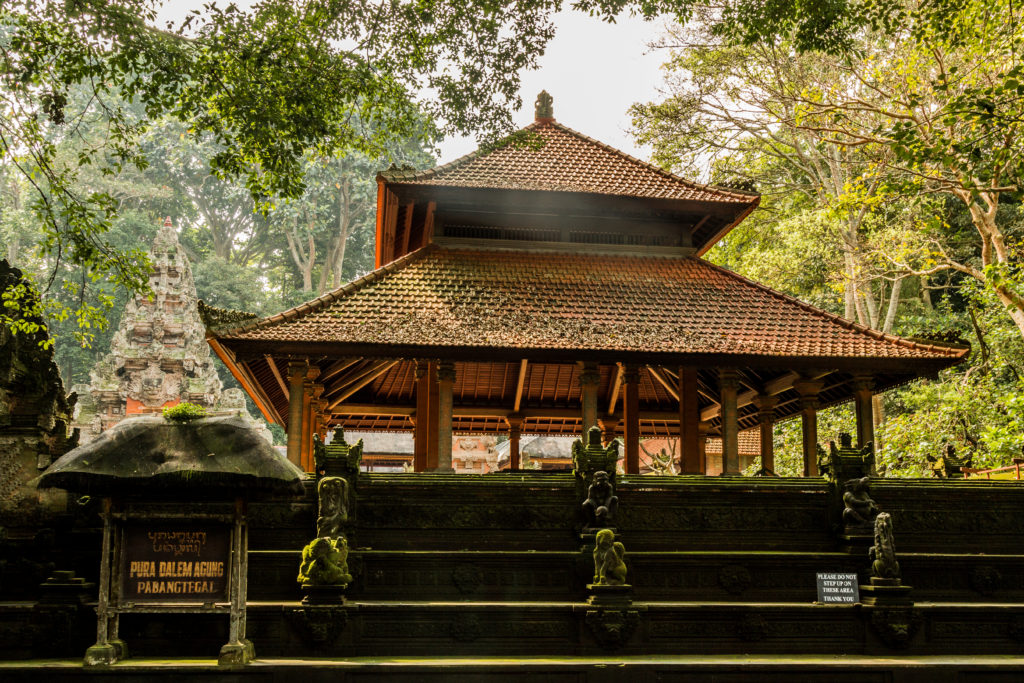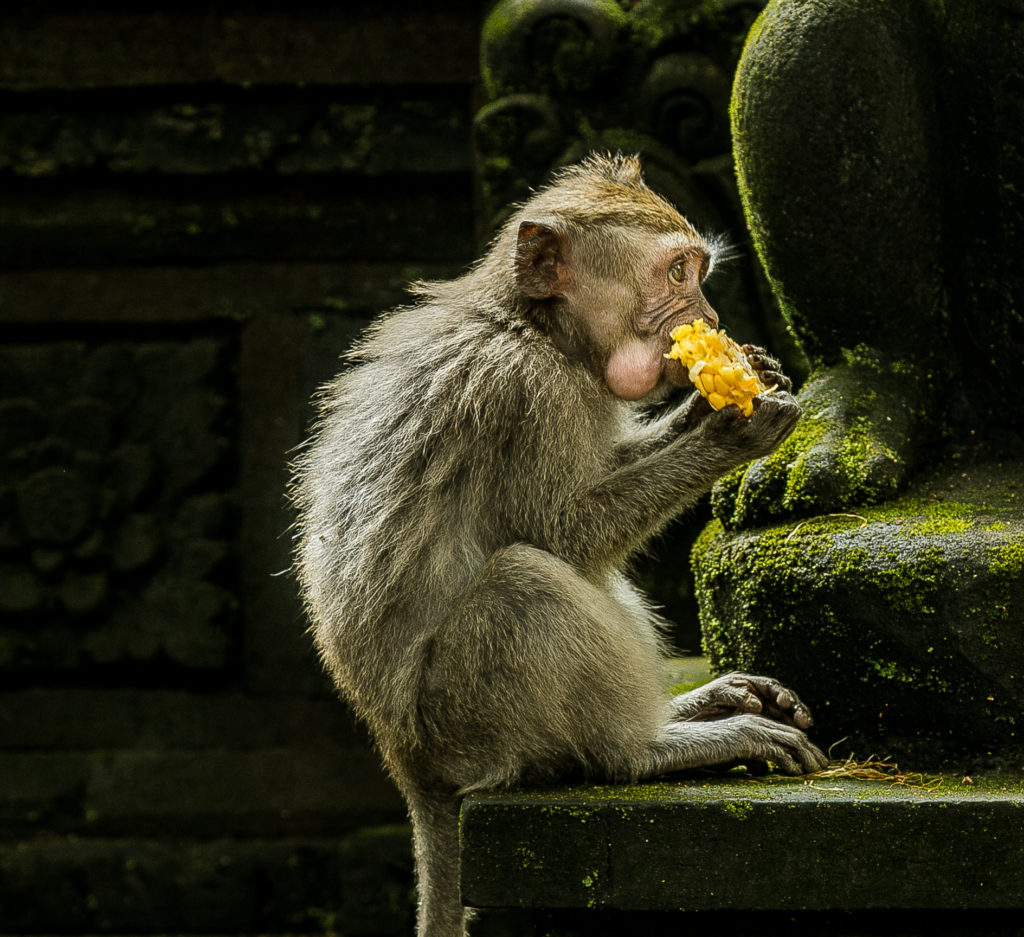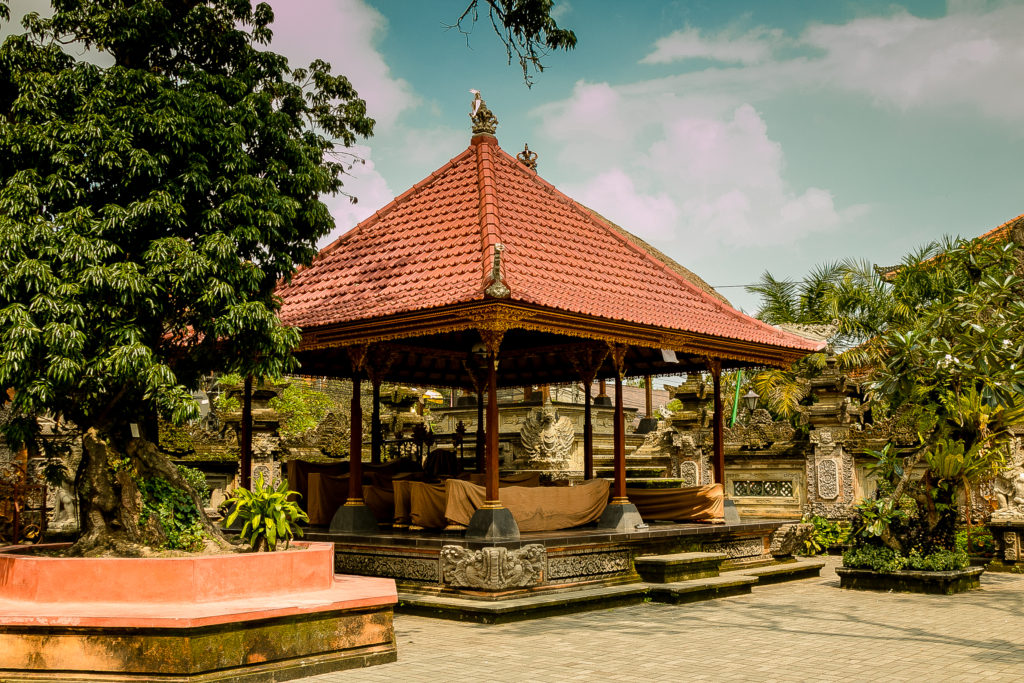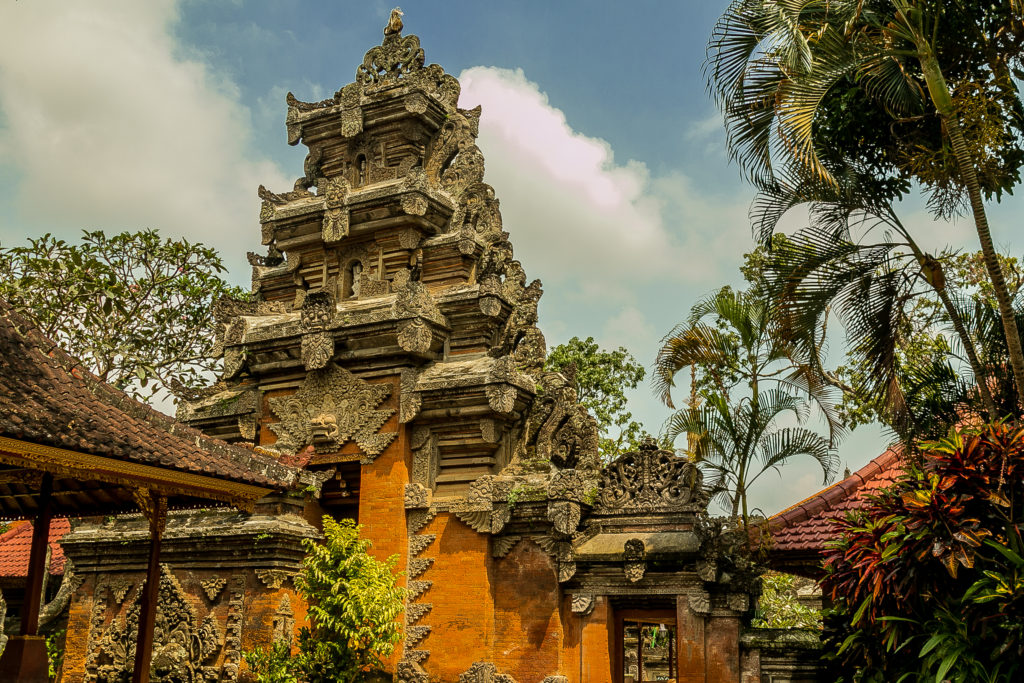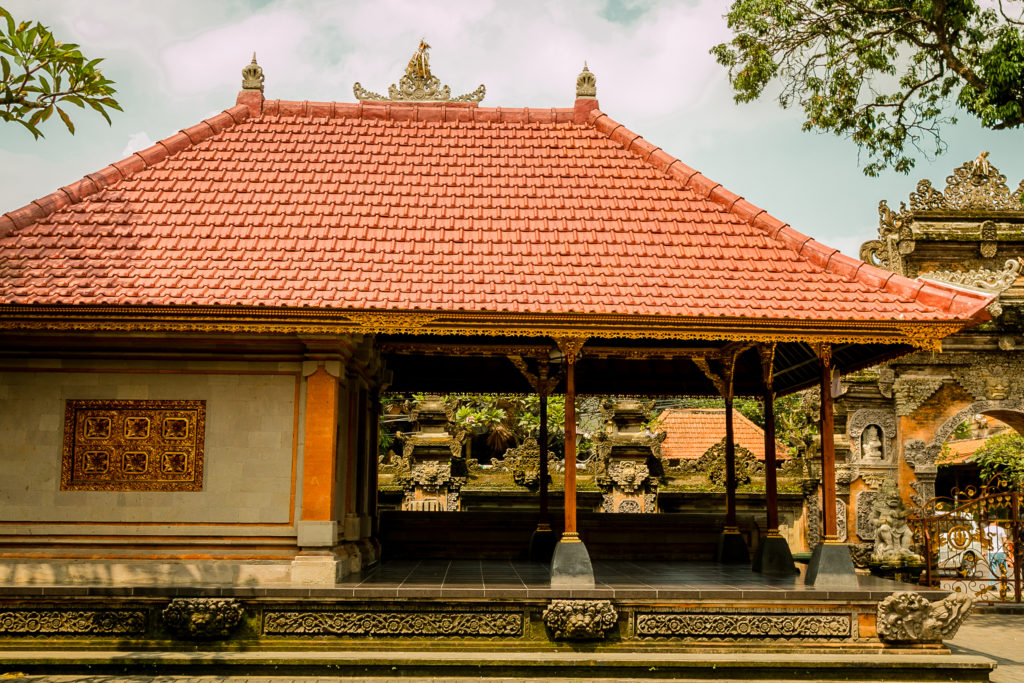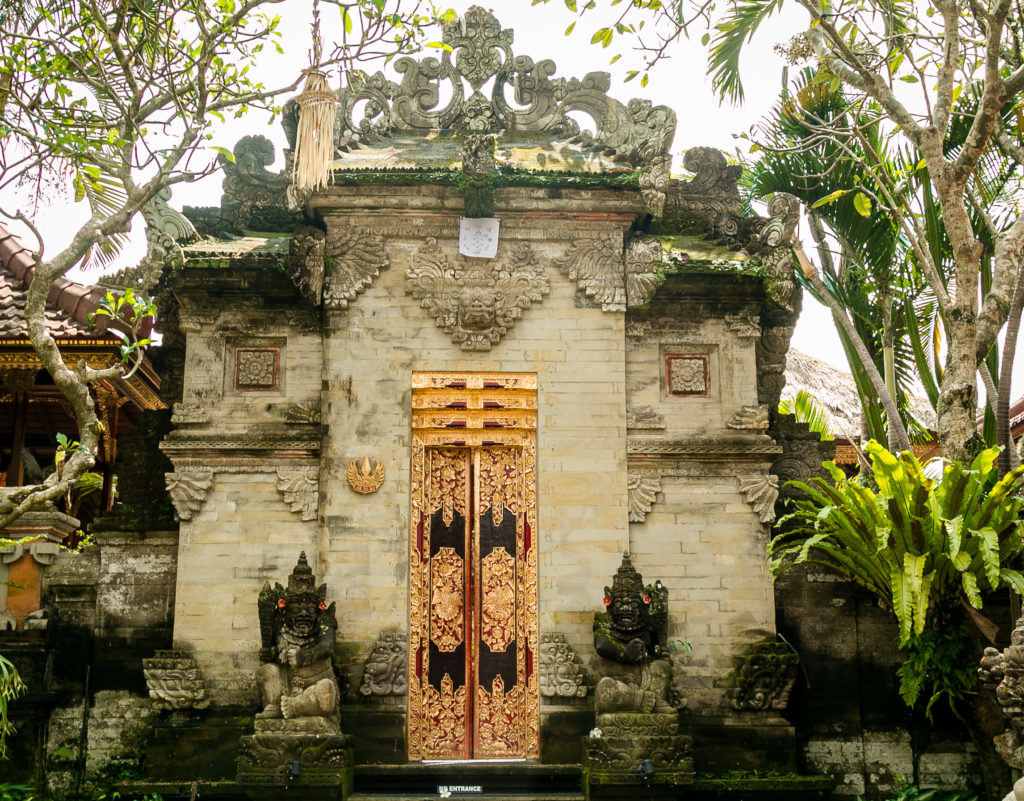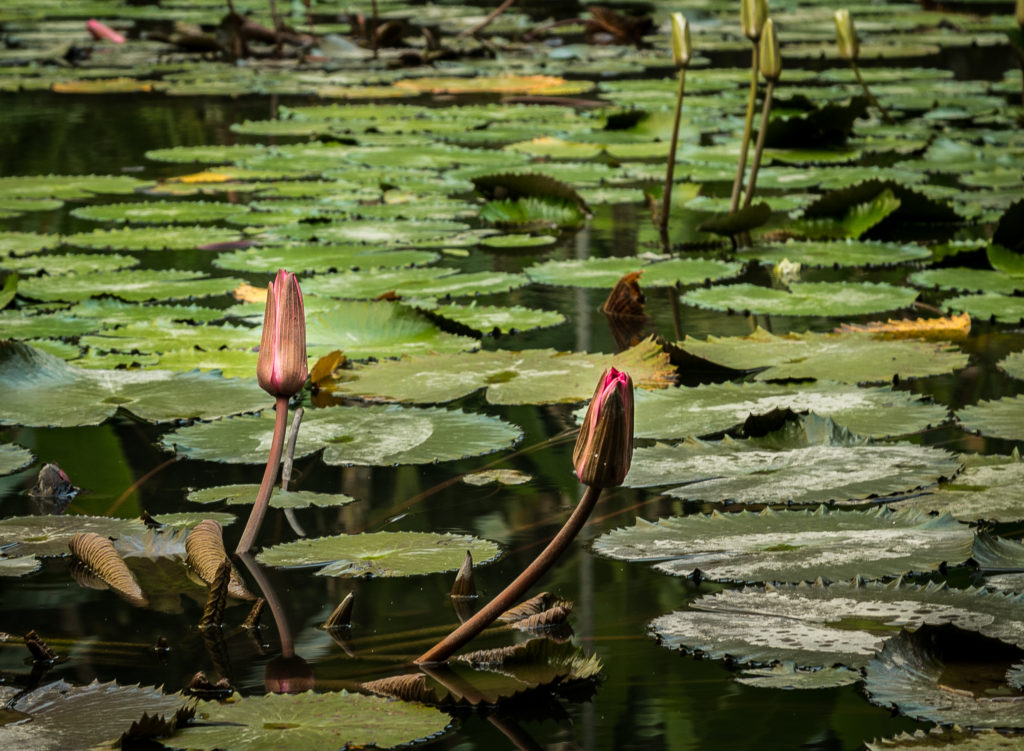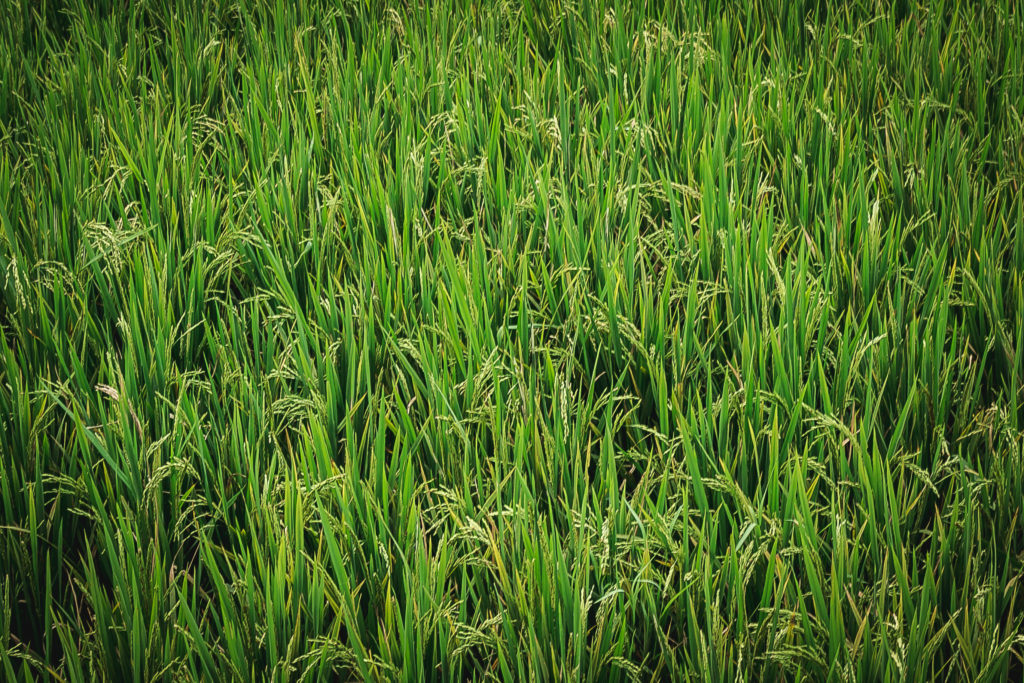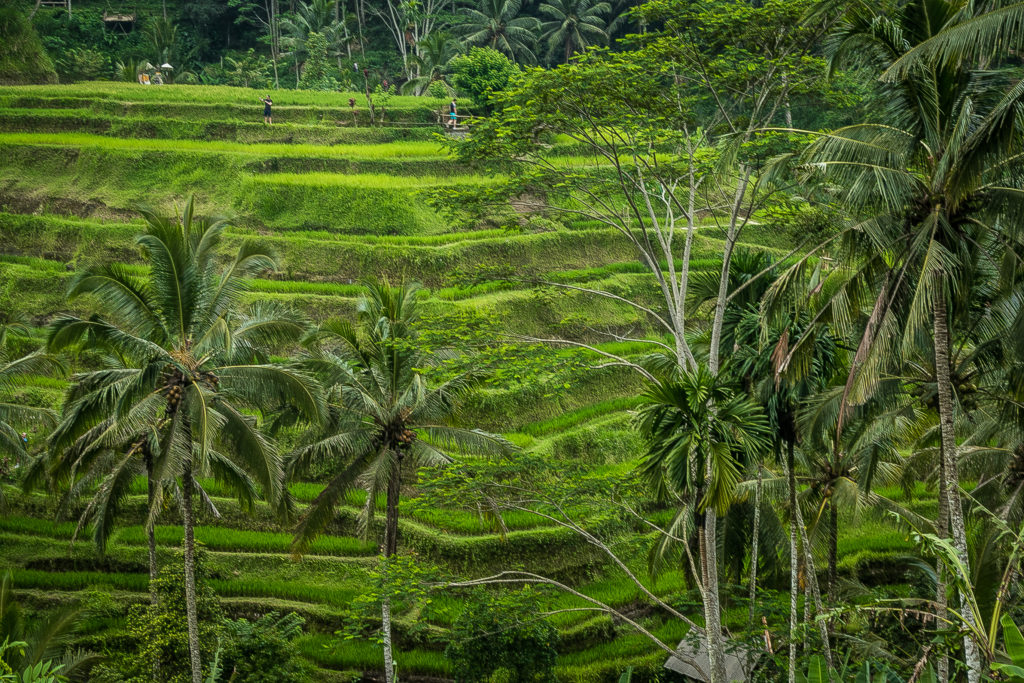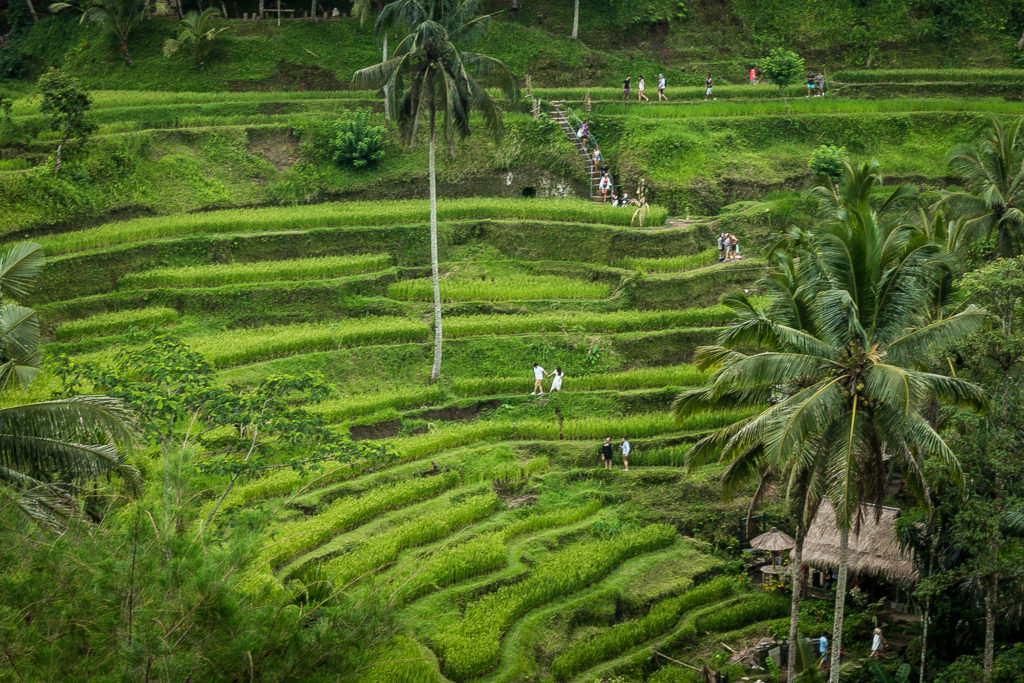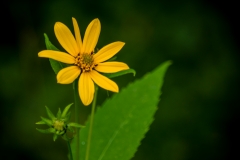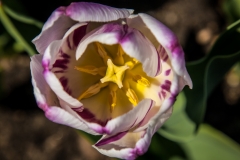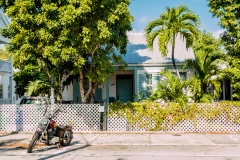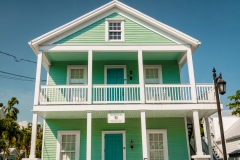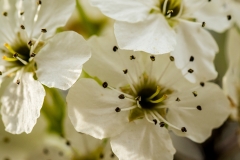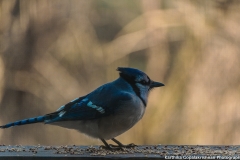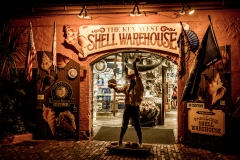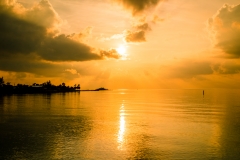Places to see in Ubud, Bali
I had an amazing vacation with my little brother in Bali during April 2019. We had spent 5 days exploring the island and checking out temples, rice terraces, and beaches in Bali. Our first day in Bali was really tiring as we had a long queue to get VoA. The airport had system issues and hence even the people who reached earlier than we were waiting to get their VoA. To know more about VoA and what do you need for Visa to Bali, check out my blog post here. We reached our hotel around late afternoon. We then freshened up and grabbed dinner from a nearby Thai restaurant. We later checked out the roadside shops in Sanur near to our stay.
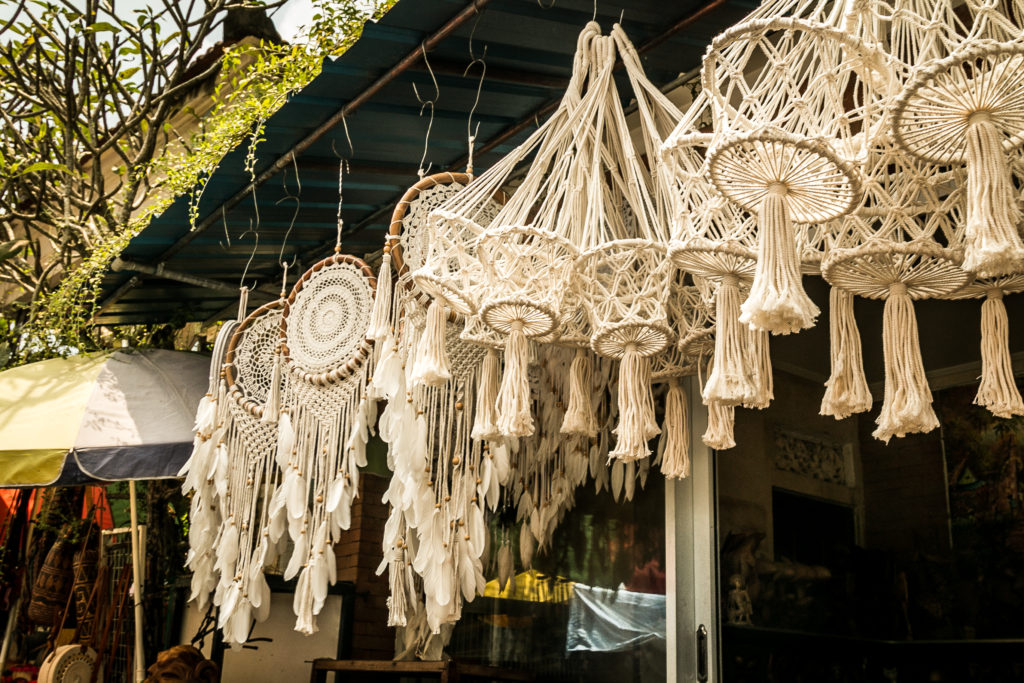
When we enquired about the cab for sightseeing, Jaffna (the receptionist) was kind enough to offer his services for the next 4 days and take us around Bali. He suggested some of the best options for our next 4 days. We decided to visit Ubud and its nearby places on our second day. As the day was strenuous with many places to visit, we planned to start our day earlier around 7 am after the scrumptious breakfast offered in the hotel.
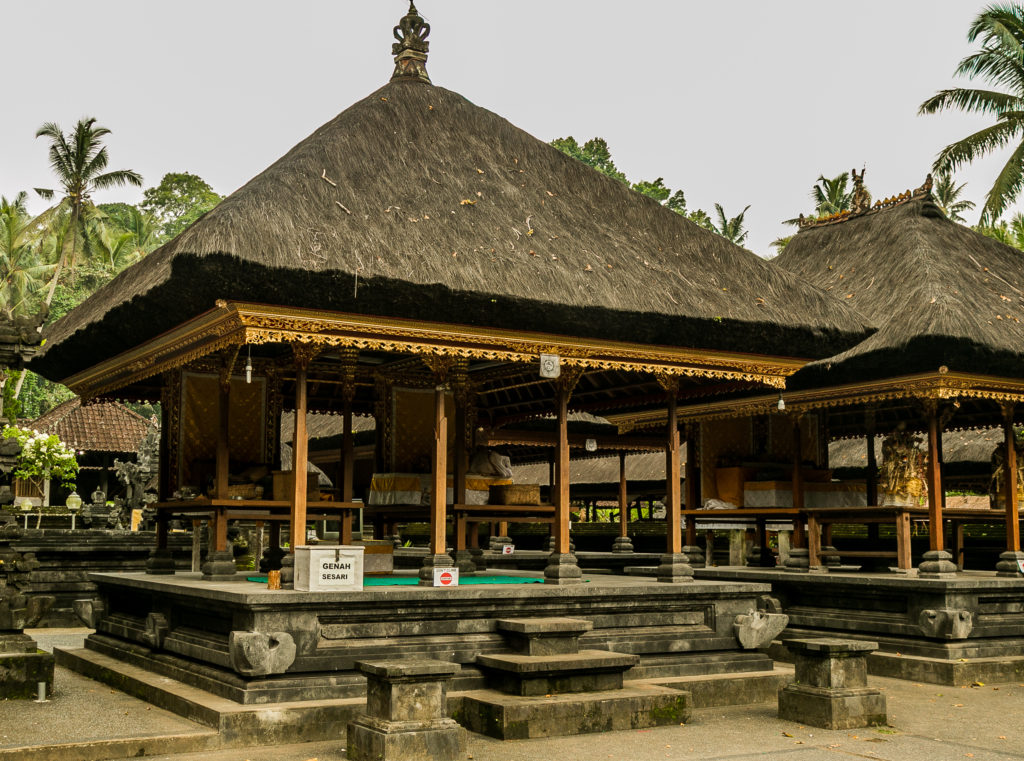
Ubud Royal Palace
Ubud is the cultural heart of Bali. The town is vibrant with lush green rice paddies, jungle, waterfalls, yoga studios, spas, restaurants, and temples. The town attracts a lot of tourists, crowded, has heavy traffic and some amazing food joints. The local Ubud market is excellent and a must visit place in Bali. The best way to get around the town is by walking. And I assure the walk will be one of the best relaxing walks of your life.
Ubud is 30 minutes away from Sanur and we started to visit a coffee plantation on our way to Ubud. We started our day earlier around 7 in the morning after our breakfast in the hotel – Airport, Sanur.
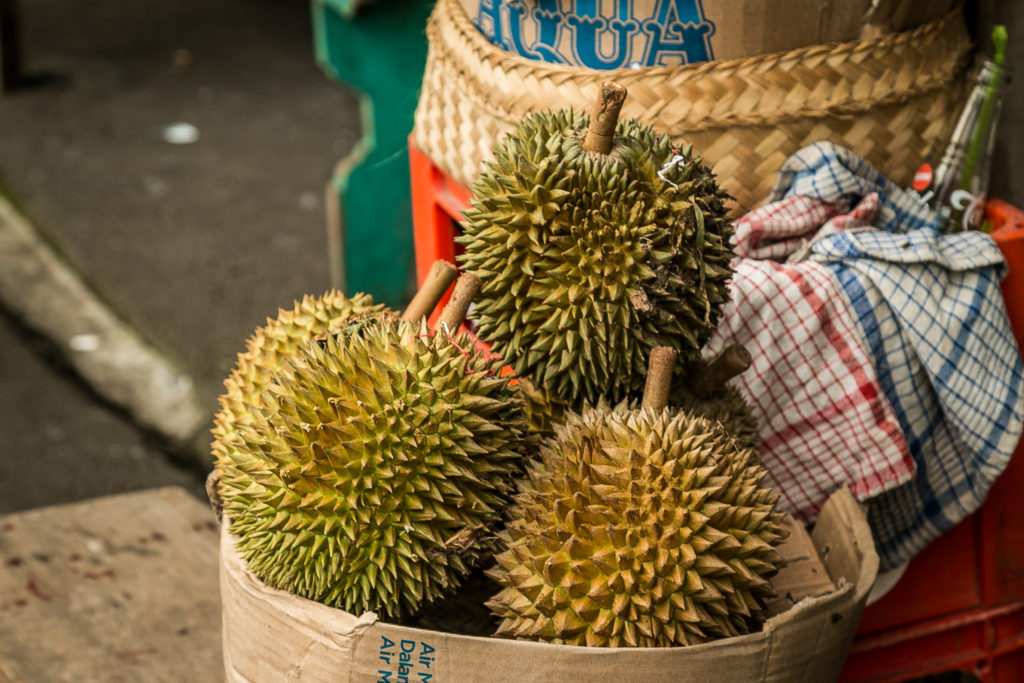
Durian Fruit – Popular in Bali
Luwak Coffee Plantation
Bali is known for its Luwak Coffee. Whether you are a coffee person or not, it’s a ritual to taste delicious Balinese Coffee when you are in Bali. You will notice Luwak Coffee sold in every restaurants and flavor of Luwak Coffee powder sold at the retail stores. Luwak Coffee is one of the costliest and the tastiest coffees of the world. Actually, the process involved in the preparation of Luwak Coffee is interesting!
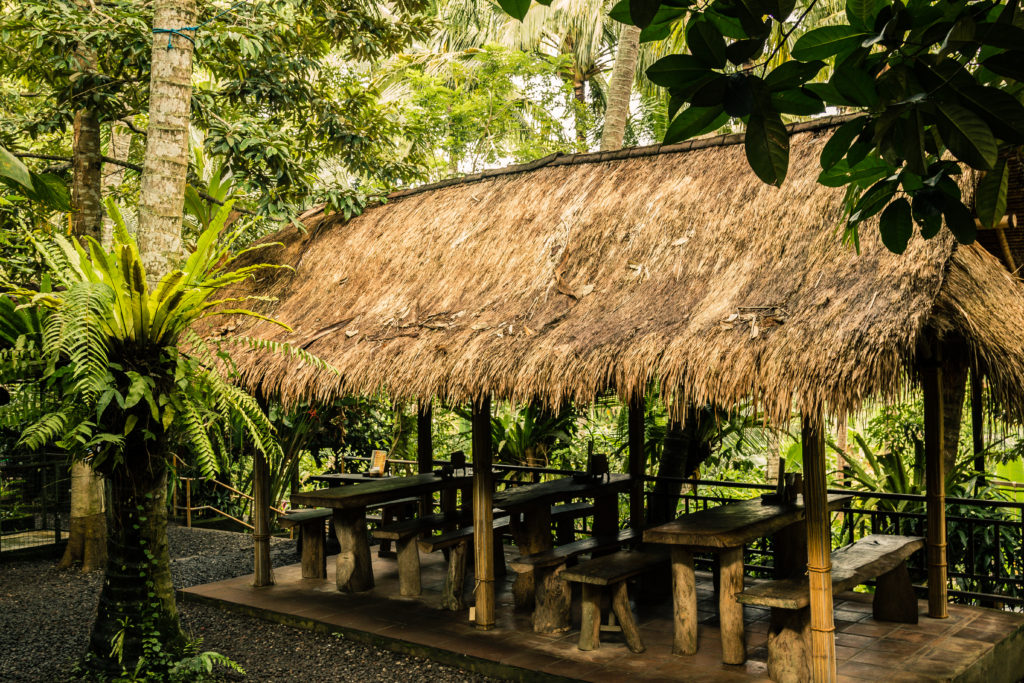
Luwak Coffee Plantation
The Civet Cat is a nocturnal tree cat in Indonesia and it snacks on the ripen coffee beans (mostly Arabica). The cat feeds on the coffee berry and the bean which is the hard stone in the berry will not be digested by the cat. It is then excreted in its poop. The poop is collected, washed to collect the beans and then dried in air. The dried beans are then roasted and grounded up to produce Luwak Coffee powder. The process is done to remove the bitterness of the coffee imparting a musky smoothness. There are numerous coffee plantations in Ubud and we visited the one nearby – Ubud Me Sari. There was a lounge area to enjoy teas and coffee. They also had a store where they sold Luwak Coffee powder and tea packets. If you are a fan of Luwak Coffee, then pick them in the stores for a cheap price. A bag of Luwak Coffee costs around $600 here!
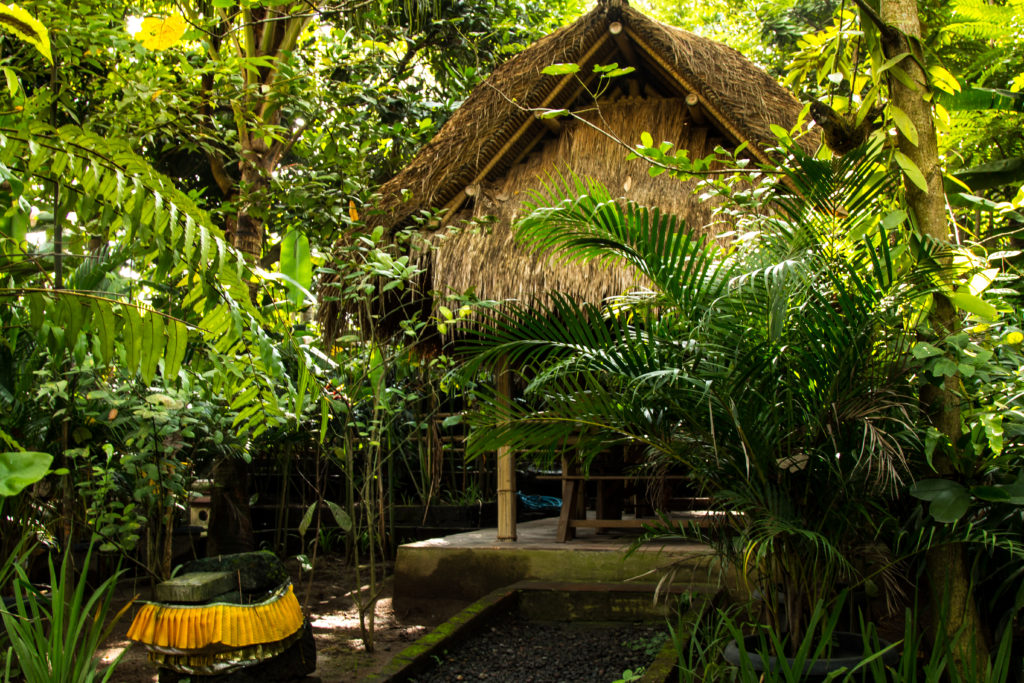
Ubud Sacred Monkey Forest
Our next stop was Ubud Monkey Forest. The Ubud Monkey Forest lies within the village of Padangtegal and the village owns it. The villager’s see the forest as an important spiritual, economic, educational and conservational center. The forest demonstrates the harmonious coexistence of humans and nature. The forest preserves some of the holy trees used in their spiritual practices. The sanctuary is also home to the Balinese long-tailed Monkeys known as macaque. There are about 600 monkeys in the forest. Remember to be careful around monkeys.
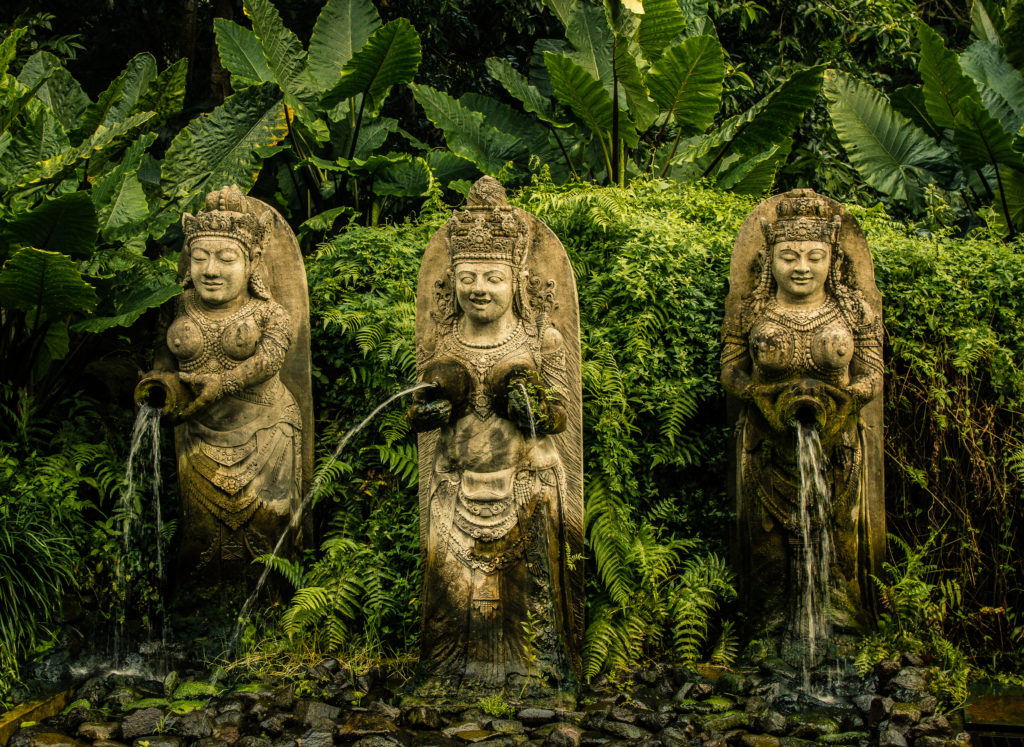
Ubud Monkey Forest
As soon as I entered, one of the monkeys from the group jumped on my bag and it opened every single part of the bag to check for food items. Once it confirmed that I didn’t have food items, they jumped off from the bag. And those three minutes were the most terrifying moments. I held my breath and stood still frozen in fear. Keep in your mind, never ever see the monkey in its eyes or shout when they are around. The forest is also home to three main temples built around the middle of the 14th century based on the analysis of the holy book – Pura Purana. The sanctuary has entrance fees – $80000 for tourists and the entrances fees vary for Indonesians. Ensure to carry the exact change for the entry fees. They don’t accept cards and they accept only Indonesian Rupiah.
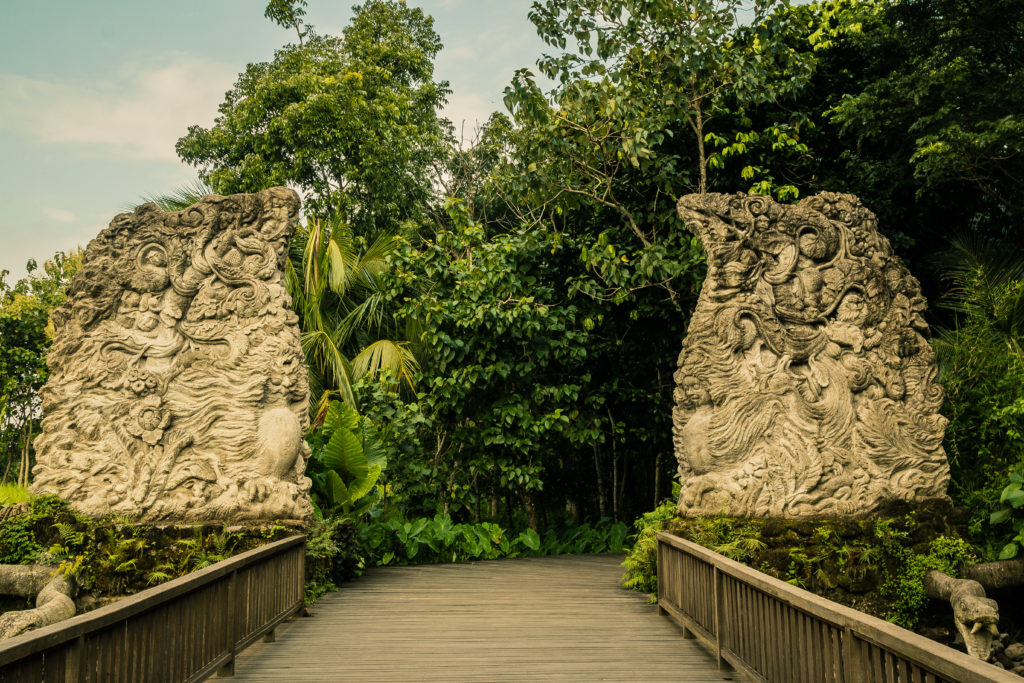
Ubud Royal Palace
We then stopped at the Ubud Royal Palace known as Puri Sari Agung situated in the center of the town near to the Ubud local market. The Palace was the official residence of the royal family in Ubud. Ubud royal palace is an artistic cultural life center and the traditional Ubud market is the symbol of a local economic resident. Ubud Royal Princess called “Tjokorda” or “Agung” still live in royal palaces. Take a tour at the Ubud Royal Palace – it’s a short and artistic one!
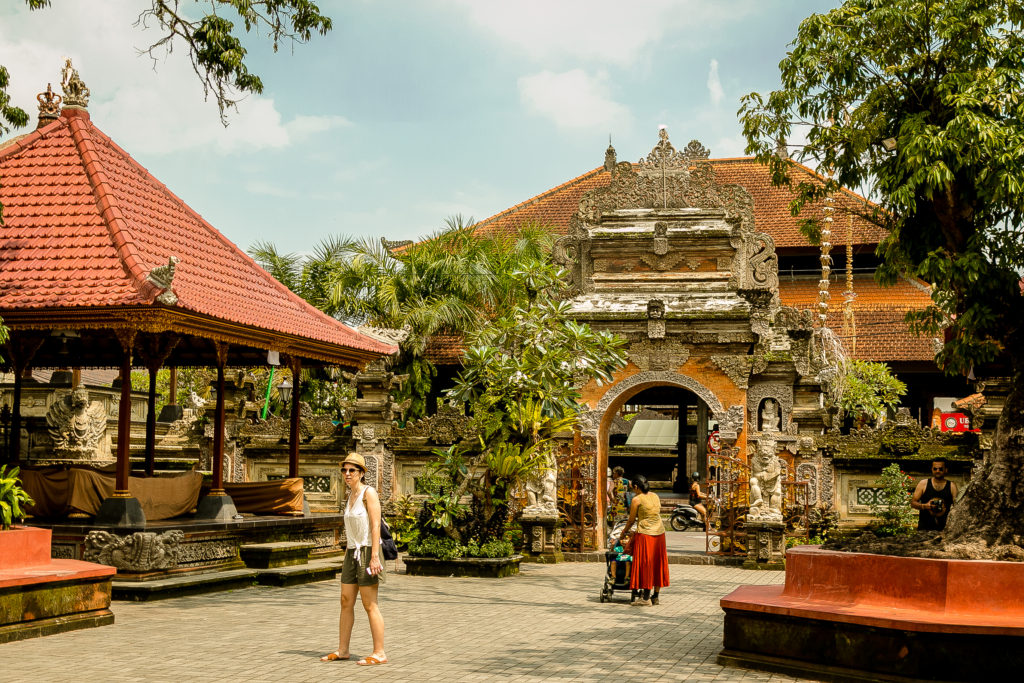
Ubud Royal Palace
Ubud Art Market
The Ubud Art Market, known as Pasar Seni Ubud is located opposite the Royal Palace and is open every day. The market has products handmade in the neighboring villages Pengosekan, Tegallalang, Payangan, and Peliatan. You can find beautiful silk scarves, lightweight cotton dresses, handmade bags, baskets, hats, statues, kites, and handcrafted wooden decors.
Compared to art markets in Bali’s other main tourist destinations such as Kuta, the Ubud Art Market can be considered to feature higher quality items and a larger mixture. Although beach clothes and shirts printer with “Bali” on them, and ikat woven skirts, Balinese style paintings, woodcarvings and woven baskets can be found almost everywhere on the island, items ranging from quadruple-colored bohemian skirts of satin, Moroccan-style oil lamps, quilt-stitched batik camisoles and brass Buddha statuettes, are somewhat the staple, typical Ubud Art Market curios.
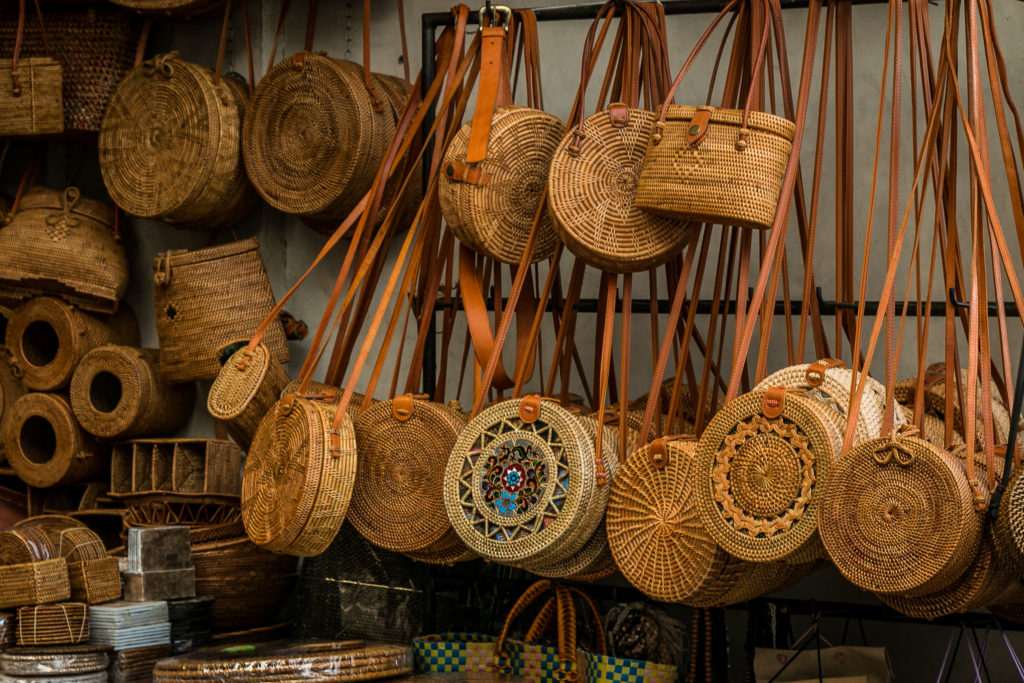
Prices vary, depending on your bargaining skills. Haggling is expected and indeed encouraged as part of the fun of shopping, but do so politely and with a smile. It is often helpful to decide upon the most you want to pay for an item before you start bargaining. Unlike the various shops aligning the Monkey Forest Road, most stalls at the Ubud Art Market bear no barcode or set price, so start bargaining which is customary. Start at about half the asking price and go up till a compromise is reached. Refrain from buying anything if it is the first day of your holiday. Do a little survey while you’re enjoying your first day and get accustomed to the prices.
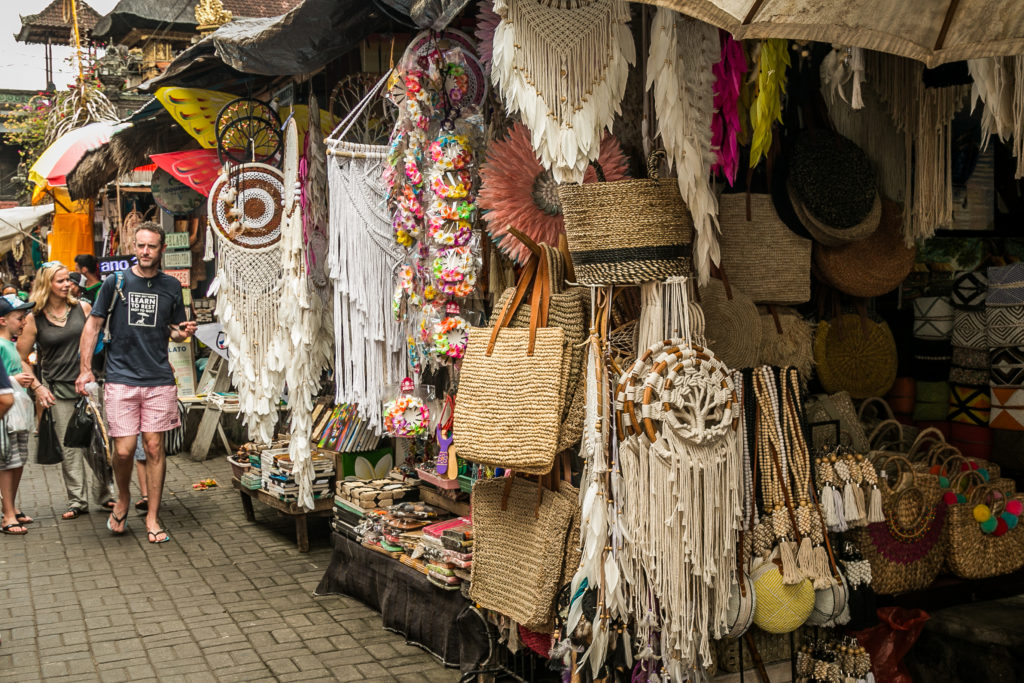
Goa Gajah Temple
We then visited Goa Gajah temple, located on the cool western edge of Bedulu village, 6Kms out of central Ubud. Goa Gajah – Elephant cave is an archaeological site of significant historical value that makes it a special place to visit. The temple was built on the hillside where two small streams meet to form a river junction or a campuahan. The temples have various structures which reveal Hindu influences and Buddhism dating to older centuries. The temple has a shallow cave with three stone idols, each wrapped in red, yellow and black cloths. The southern part of the temple features beautiful rice fields and small streams that lead to the Petanu River.
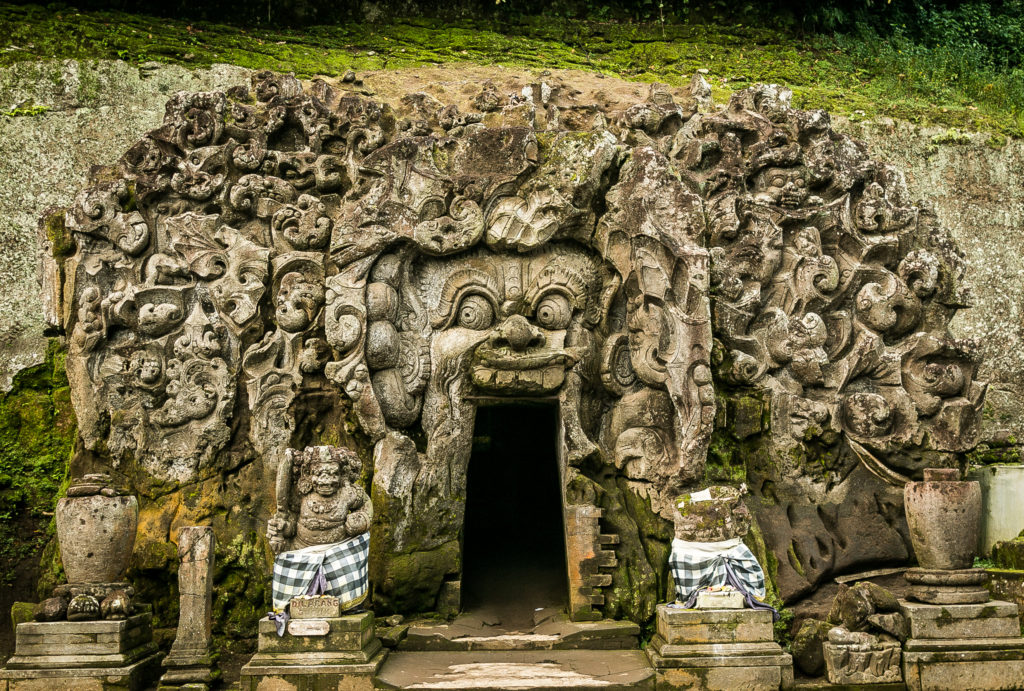
Elephant Cave – Goa Gajah Temple
This place was considered to be sacred and was built for hermetic prayers and meditations. The temple is open from 8 AM to 4 PM and has entry fees. Again, ensure to carry the exact change as cards are not accepted at the temple and only Indonesian Rupiah is accepted at the temple. You should wear a sarong to visit the temple. Our guide, Jaffna, bough sarong for our temple visits and hence there was no need to buy them from stores for us. Sarongs are available at every store and in some places, the temples offer them along with their entry tickets. Just check your entry ticket before purchasing them from stores! Again bargain, bargain, and bargain when you buy anything anywhere in Bali.
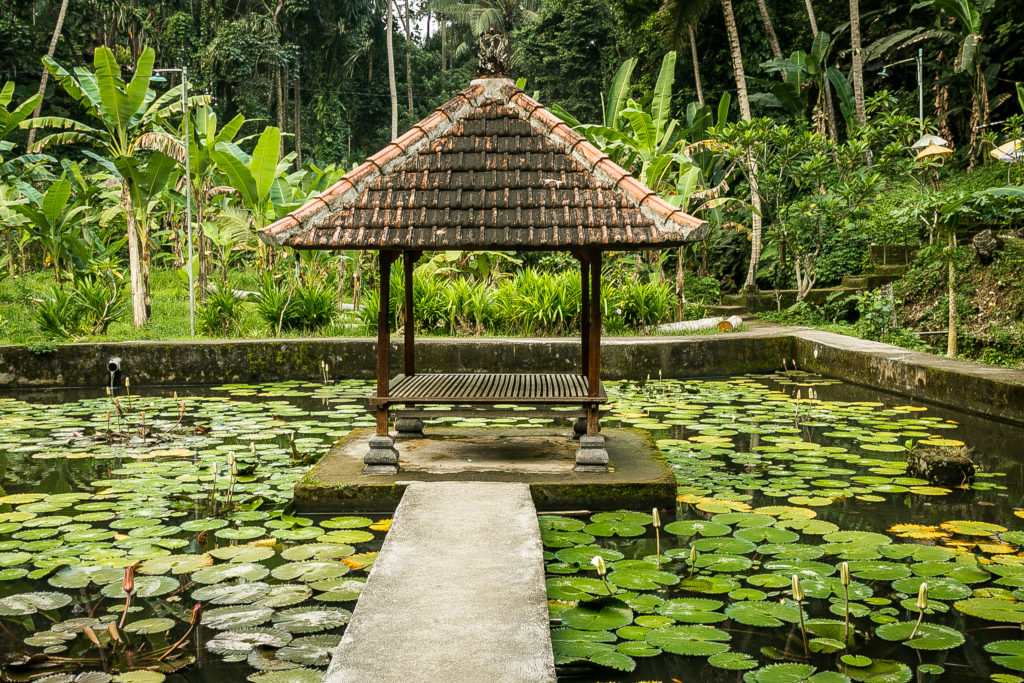
Mount Batur and Lake Batur
After our visit to Goa Gajah Temple, we then headed to Mount Batur and also had authentic Indonesian food for lunch in a hotel overlooking Mt.Batur. Mount Batur is an active volcano located in the Bangli region on the island of Bali. It was a cloudy day so the entire lake Batur was covered with mist. There are many tour companies who offer morning sunrise and evening sunset hikes in Mount Batur. We had a brief lunch in Grand Puncak Sari restaurant. They had an Indonesian buffet for lunch and offered Nasi Goreng, Satay, fried banana, fried vegetables, Indonesian desserts, and fried noodles.
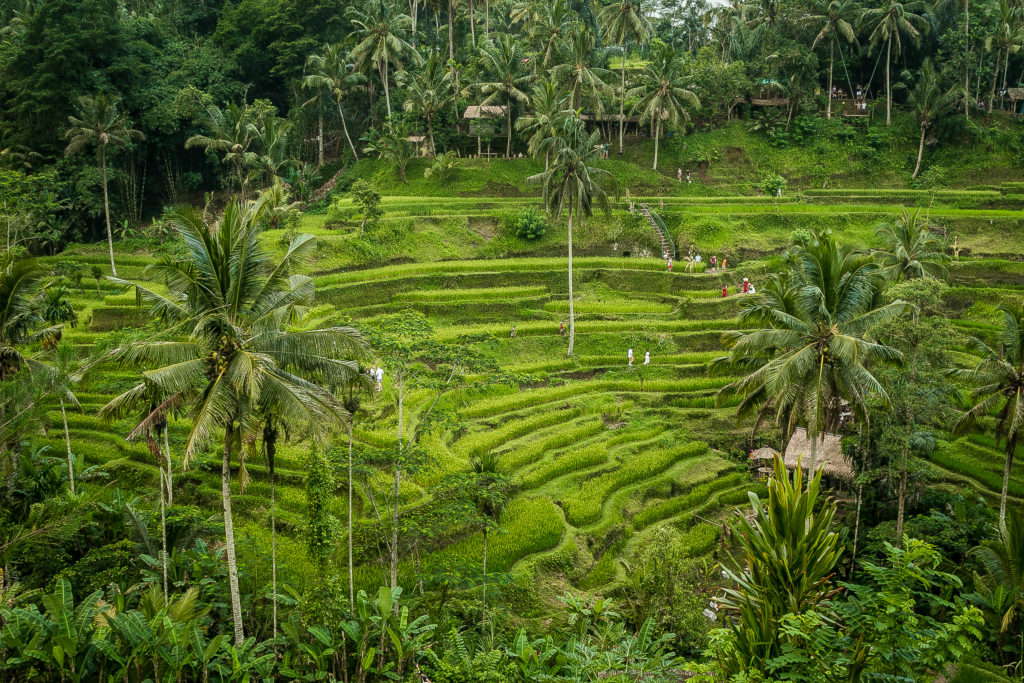
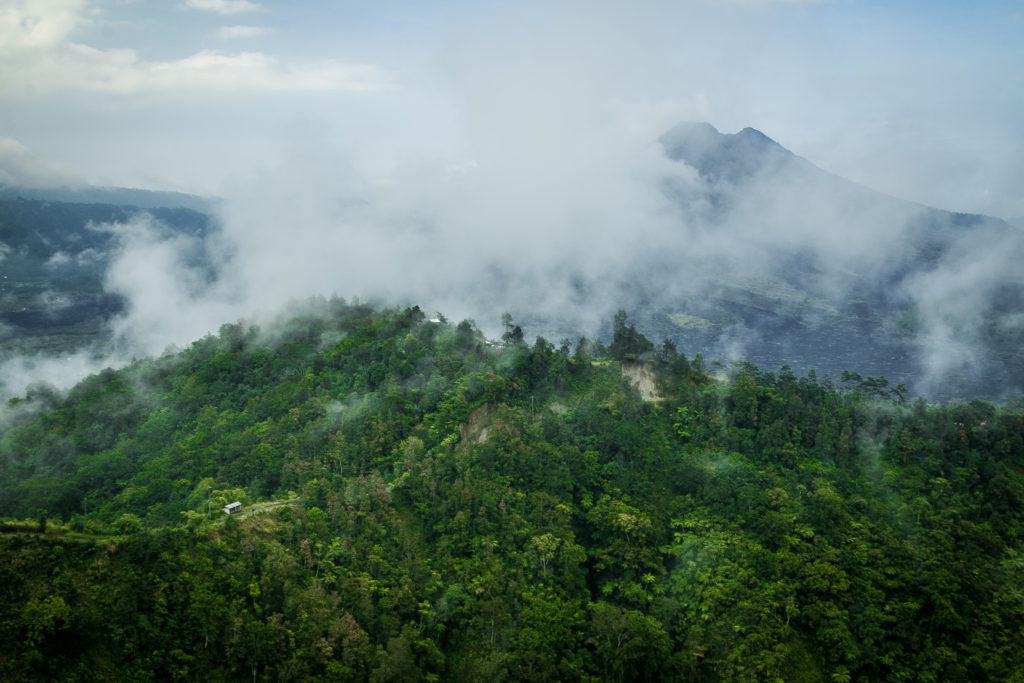
Mount Batur
Tegallalang Rice Terraces
We then headed to visit the beautiful and the famous rice terraces in Bali. If you have seen photos of Bali, you would have seen lush green rice terraces in every image and they are this iconic Tegallalang rice terrace. The rice terrace is famous for its beautiful scenes of rice paddies and features the traditional Balinese cooperative irrigation system called Subak. Subak was passed down by the holy priest named Rsi Markandaya in the eighth century. The rice terrace is located an hour away in the north of Ubud. There are no entry fees to visit the rice terraces and they offer dramatic views for a perfect postcard picture. There is a number of cafes and artistic shops around rice terraces. We took a short walk along the rice terraces. Watch out for the steps on the terrace. Also, you will see swings in the rice terraces. Bali Swing is a must thing to try out in Bali if you are not afraid of heights.
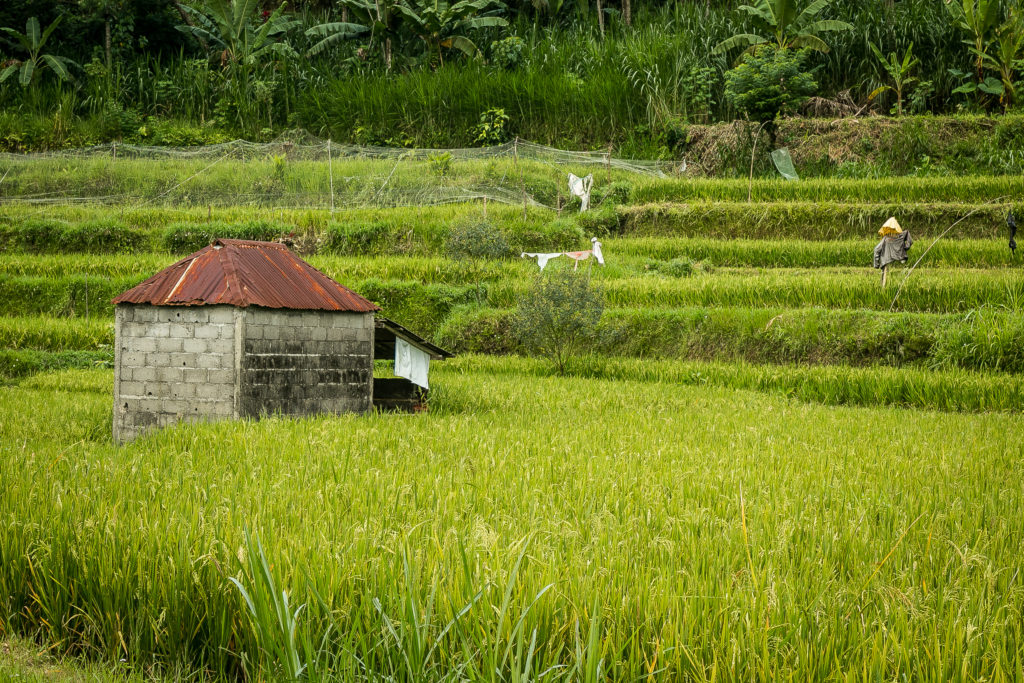
Tegenungan Waterfall
Our last and the final stop for the day was Tegenungan Waterfall. The waterfall is perfect for the nature lovers and it is one of the closest natural attraction located in the southeast Ubud. The waterfall has entrance fees for tourists and is open until 6:30 PM. The fall is situated between the dense foliage farms with volumes of water cascading down. The fall also has a vast pebbly base where you can swim or take a dip in the pool. Ensure to take care while swimming in the pool during rainy seasons as they are more prone to flash floods. One has to climb down several steps to access the pool and view the falls closer. I and my little brother, Vini, were tired and hence we decided to enjoy the cascading centerpiece from the viewing deck.
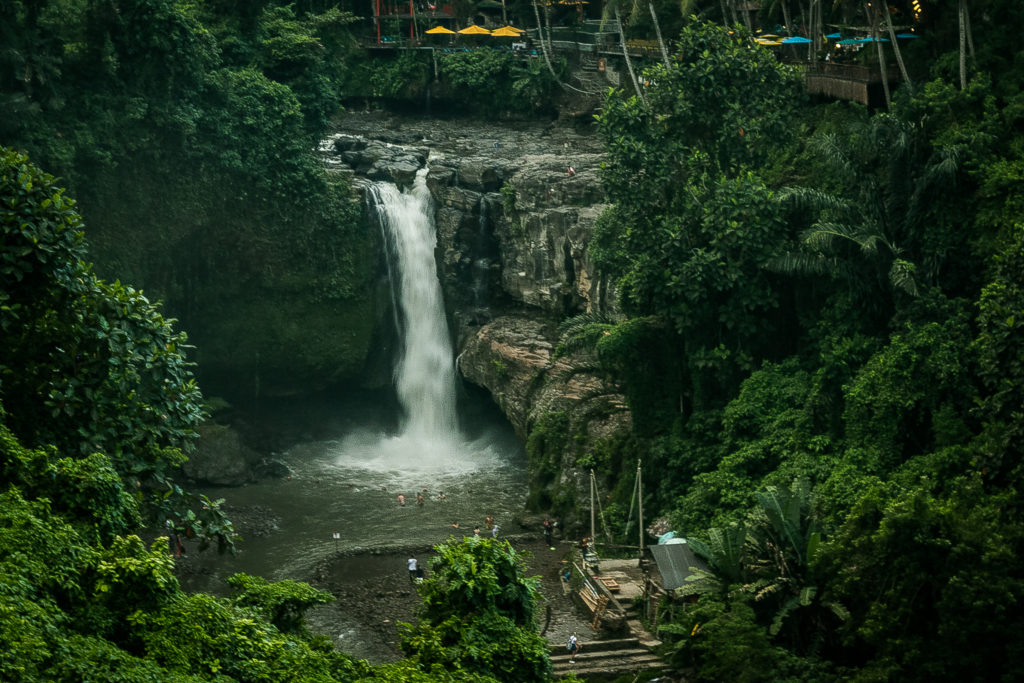
After our visit to the waterfall, we then headed back to Sanur. It was a long day but then worth visiting. Ubud is definitely a must visit town in Bali and it’s a shopper paradise. Bali amazes you with its natural beauty, history, culture, and temples. The town of Ubud is a perfect tourist spot with royal palaces and art markets. But once, you move out of the town, you will find lush green rice terraces and gorgeous waterfalls. One cannot thank enough Mother Nature to bless this land abundantly!
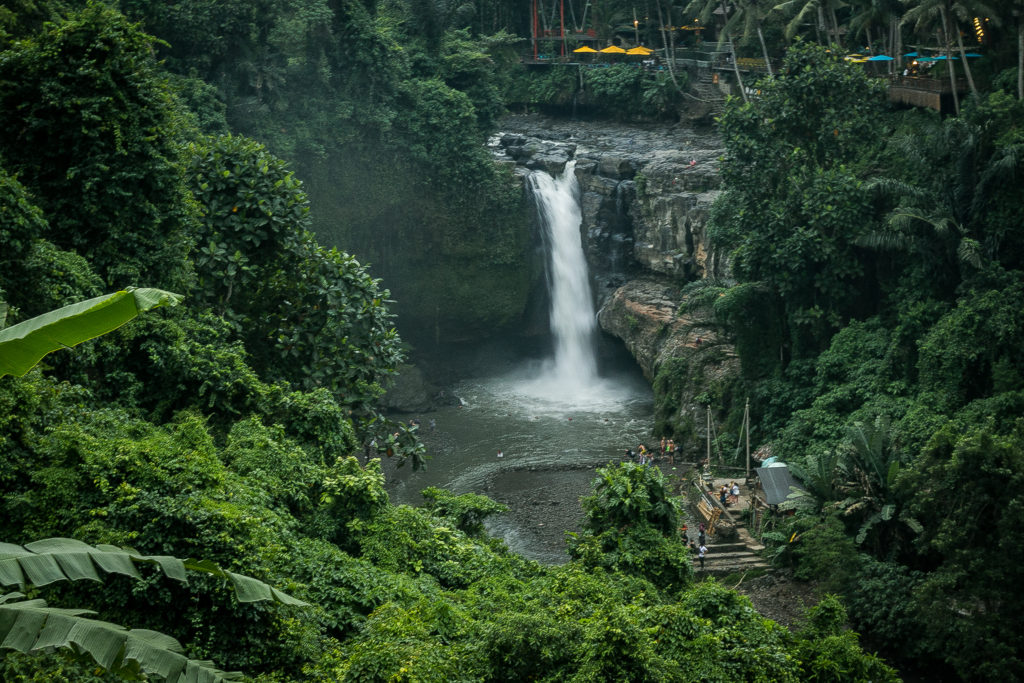
My Suggestions for your visit to Bali
- Ensure to carry cash (IDR) along with you as every attraction has entrance fees
- Ensure to carry water bottles. Water bottles are costly in Bali. Please buy a lot of them in a retail store to avoid spending too much on tourist spots
- Carry sunscreen, sunglass, and hat
- Every temple request visitors to wear a sarong. Carry a sarong with you in Bali and it saves so much
- Bargain, Bargain if you purchase in Ubud markets. But please do bargain politely
- The rice terrace tour is free; hence please don’t spend money on rice terraces tours
- There are many photo points in the rice terrace. Ensure to check whether they do have fees before you enter
- Paid washrooms are available near to all the attractions
- The roads in Ubud doesn’t have any traffic signals; hence exercise caution while crossing the roads
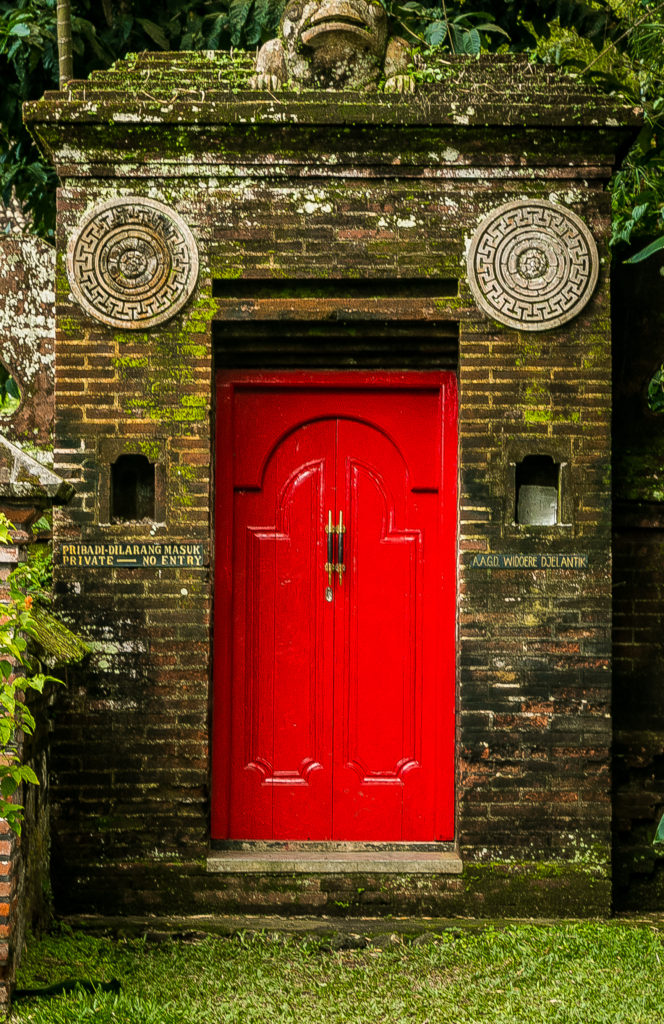
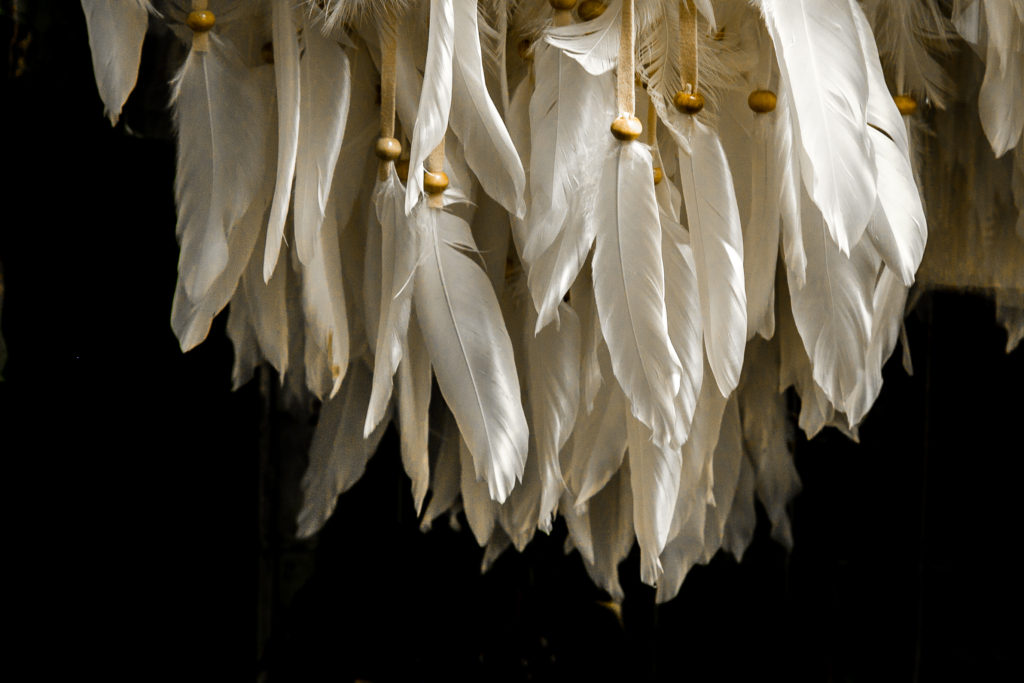
Ubud will remain as one of the beautiful places in my heart and in my mind. Have you visited Ubud? If so, let me know your favorite places in Ubud. If not, then you have to include Ubud in your list for sure.
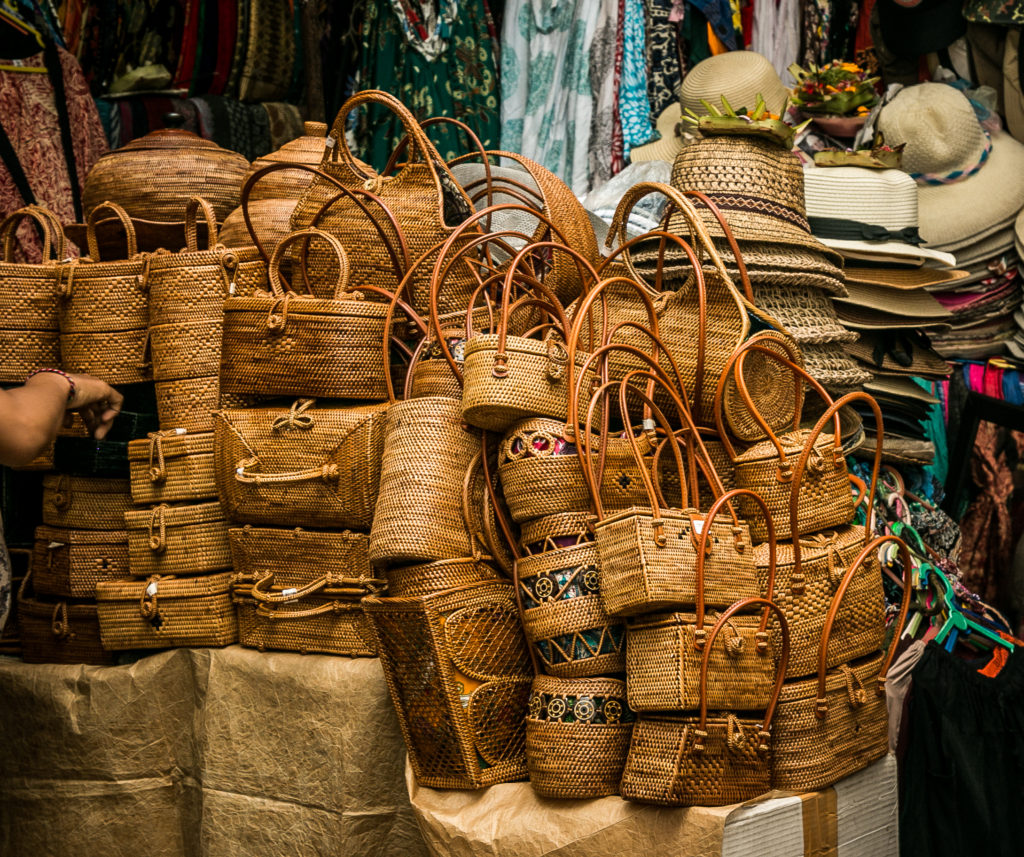
If you like my travelogue and wish to follow my travel stories further, then do like and follow my profile here – Facebook, Google, Instagram
Thanks, Karthi

